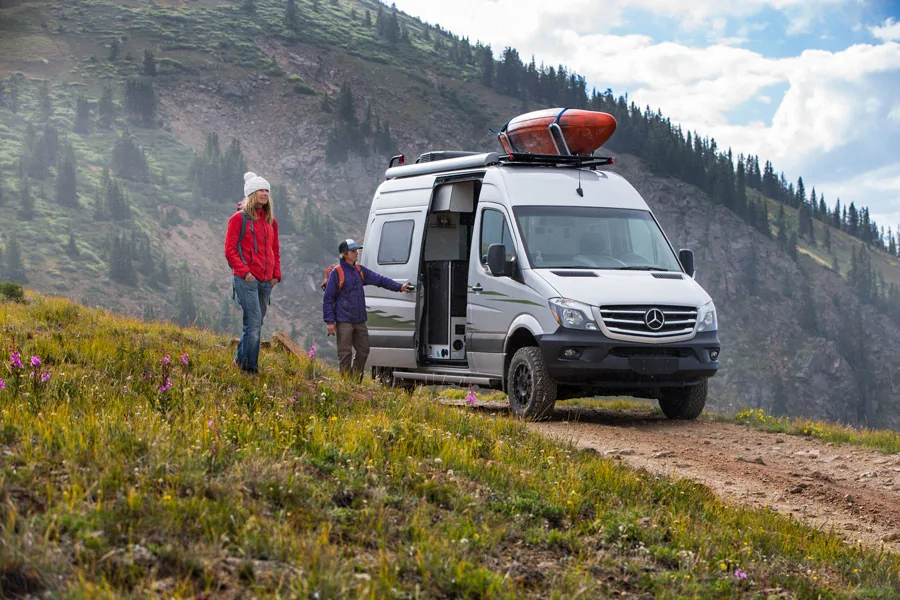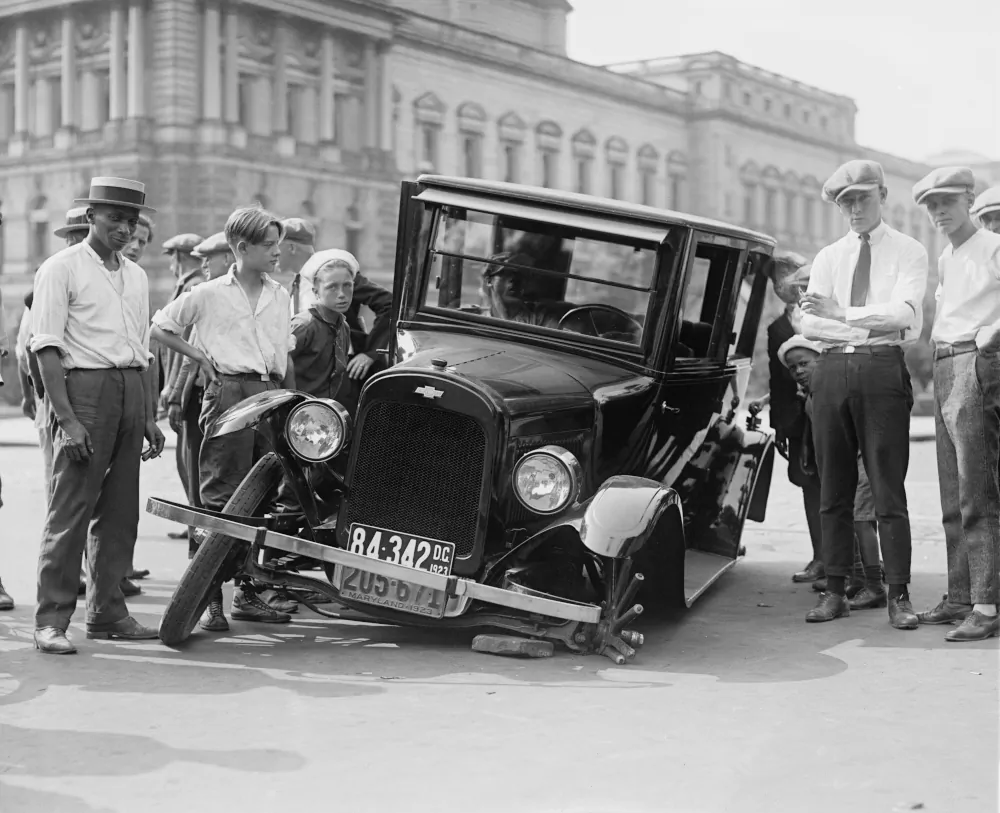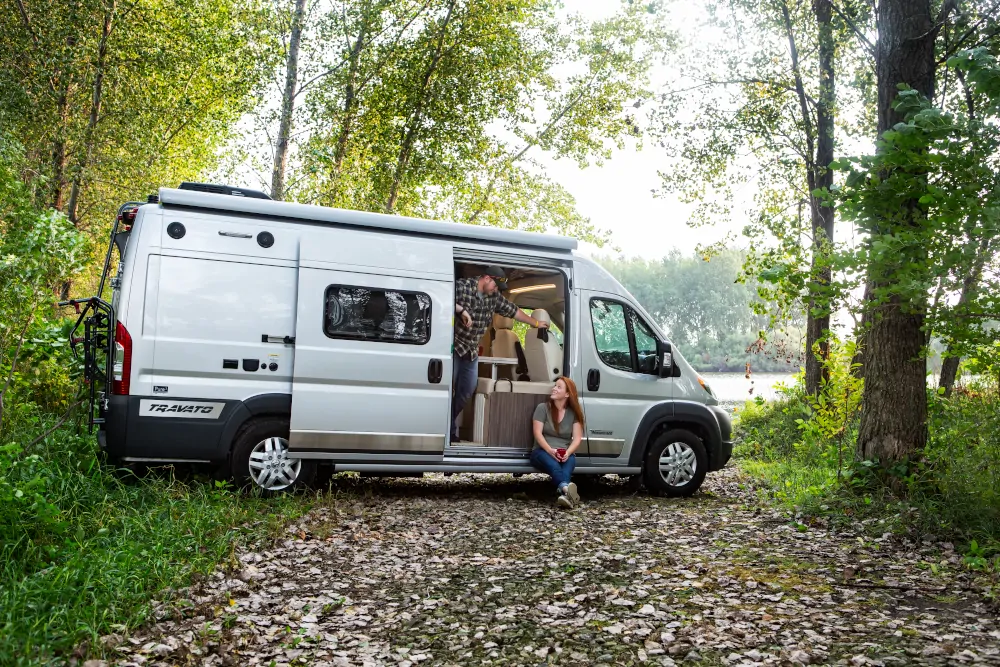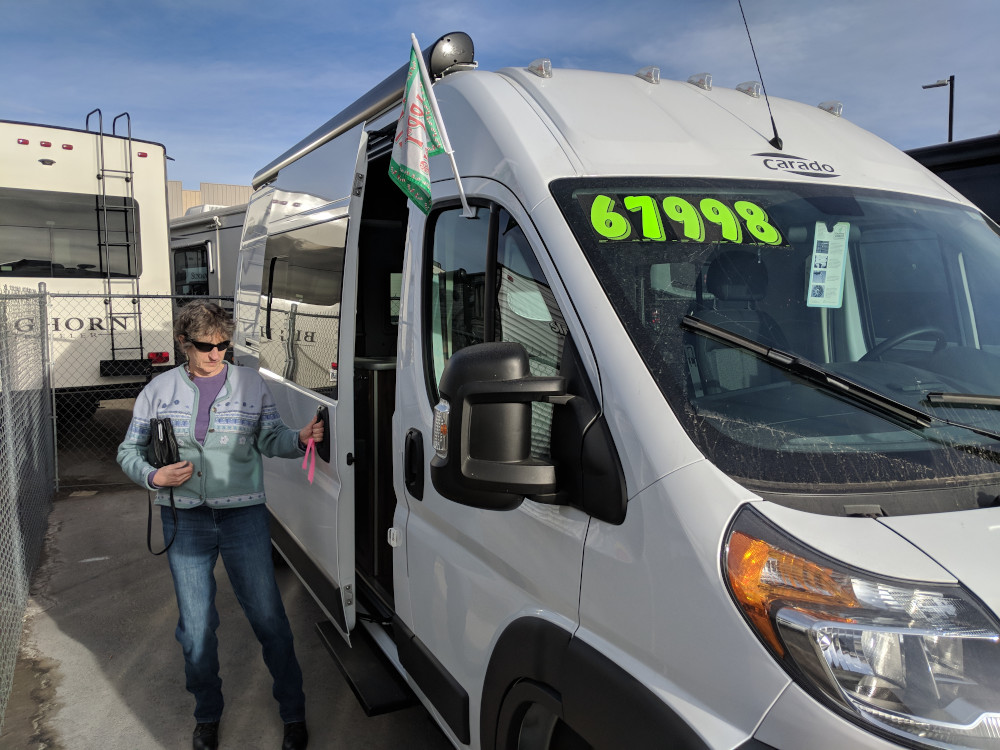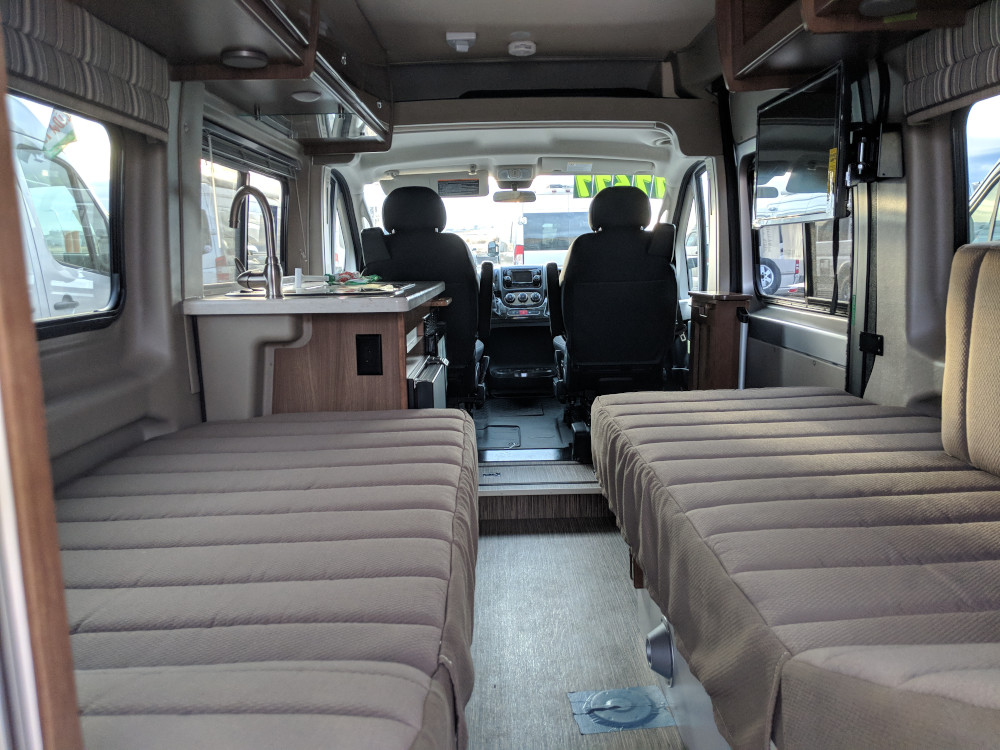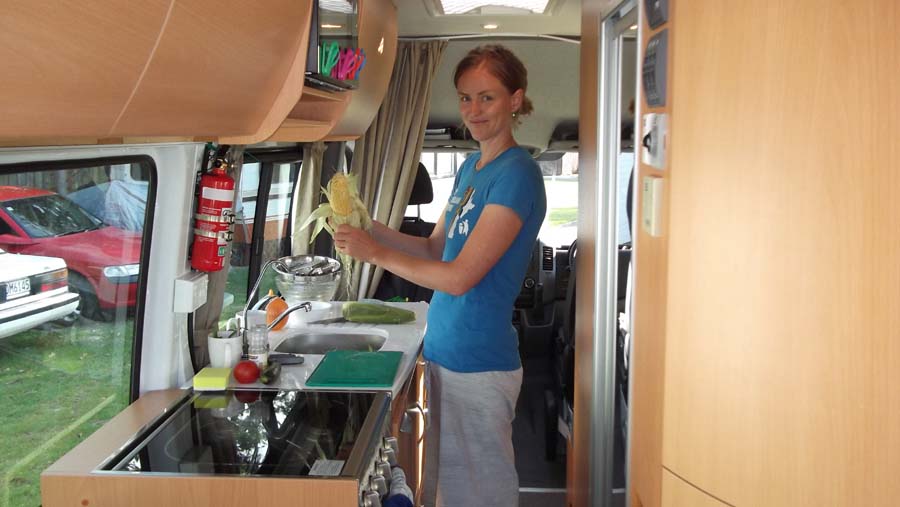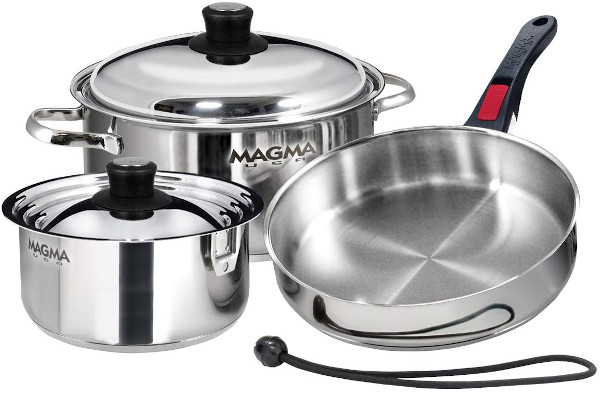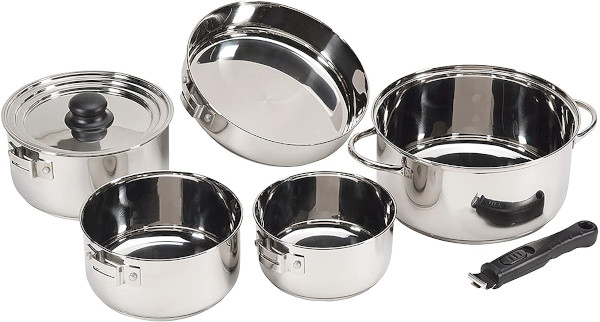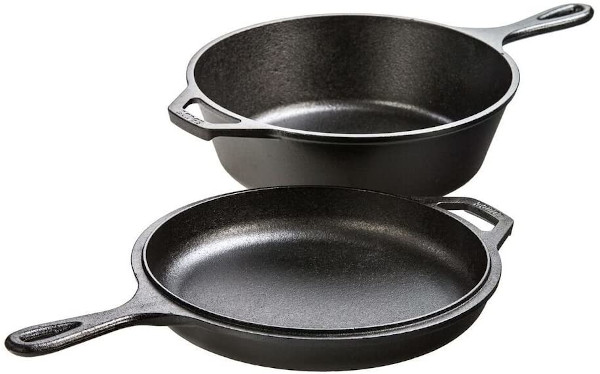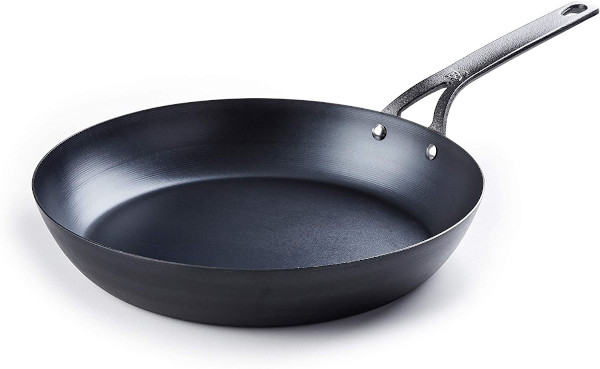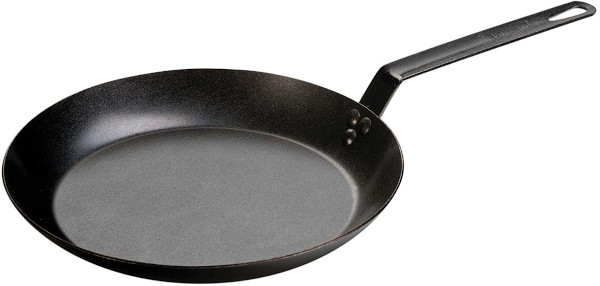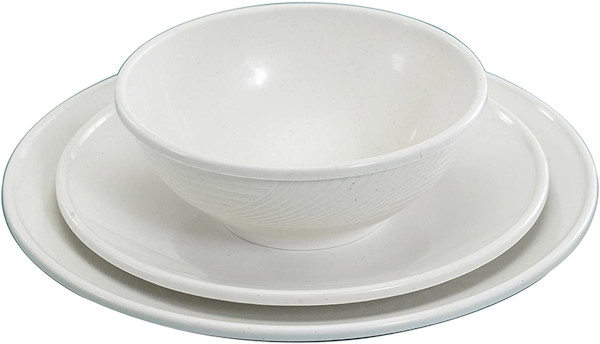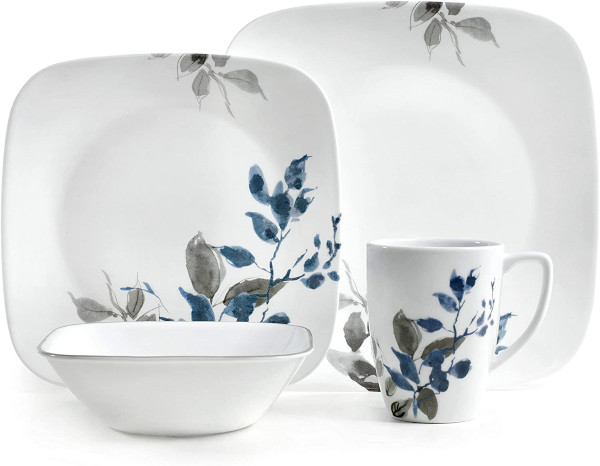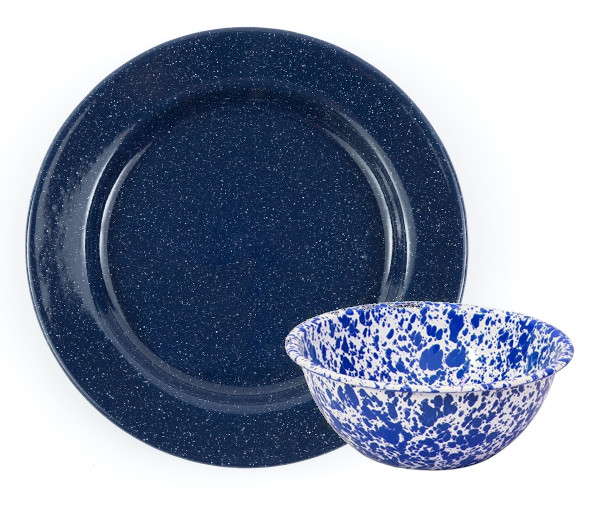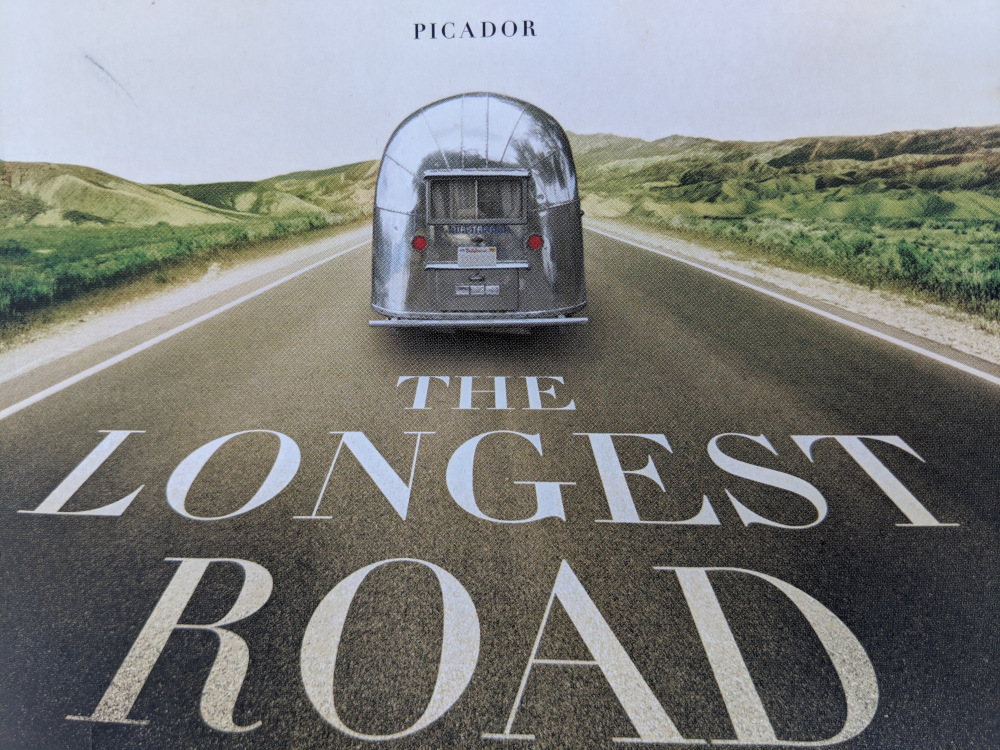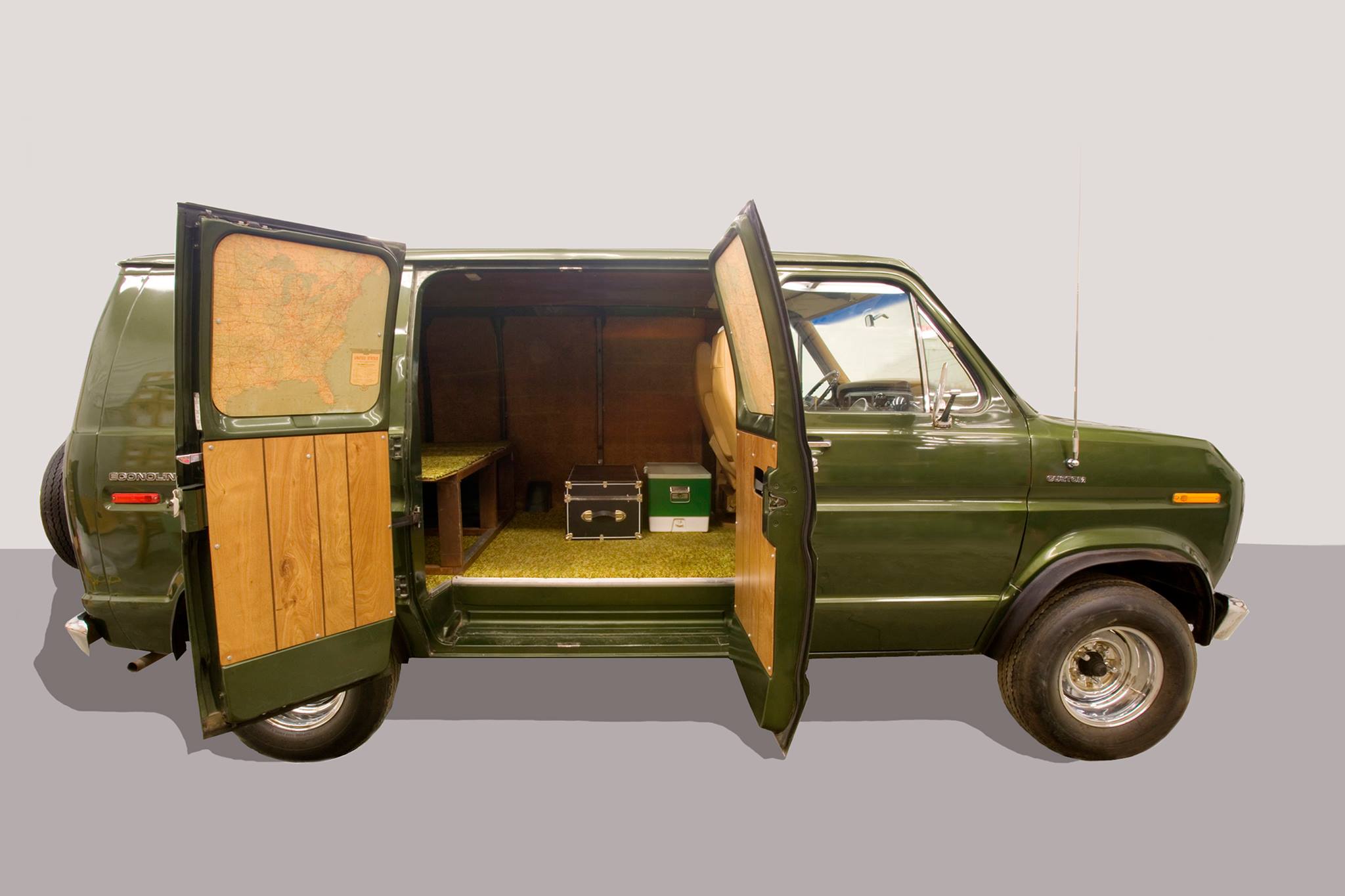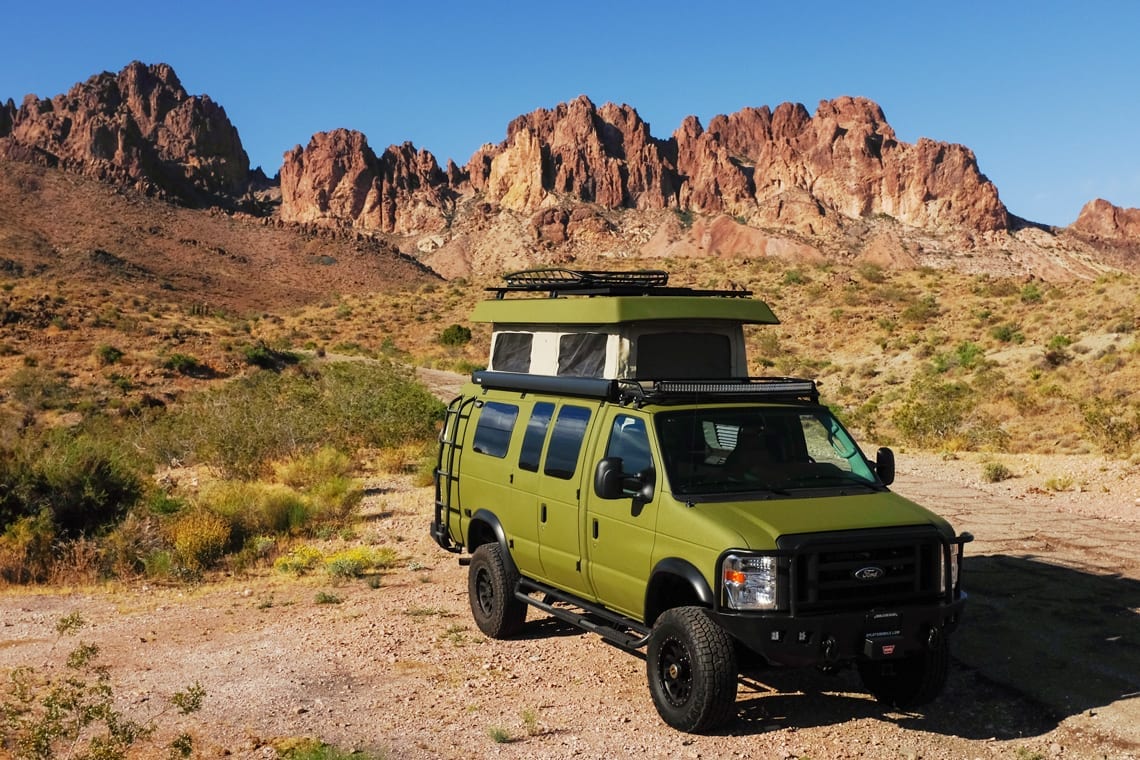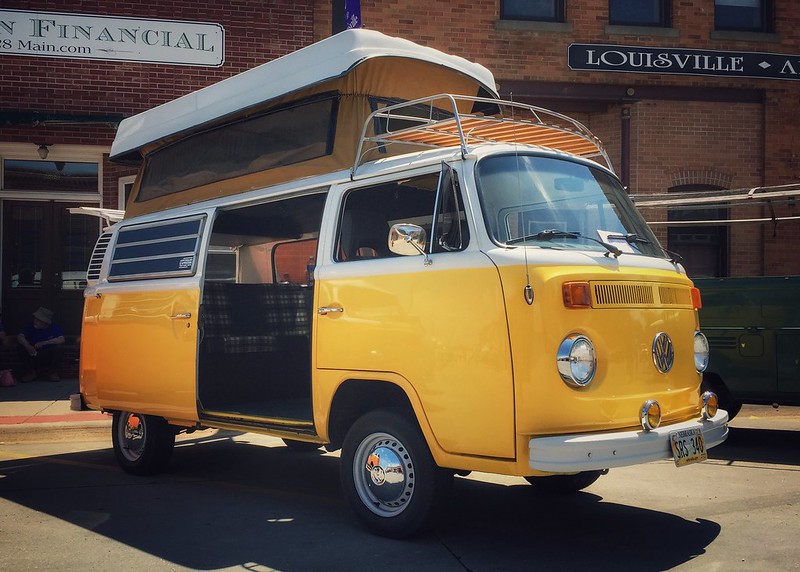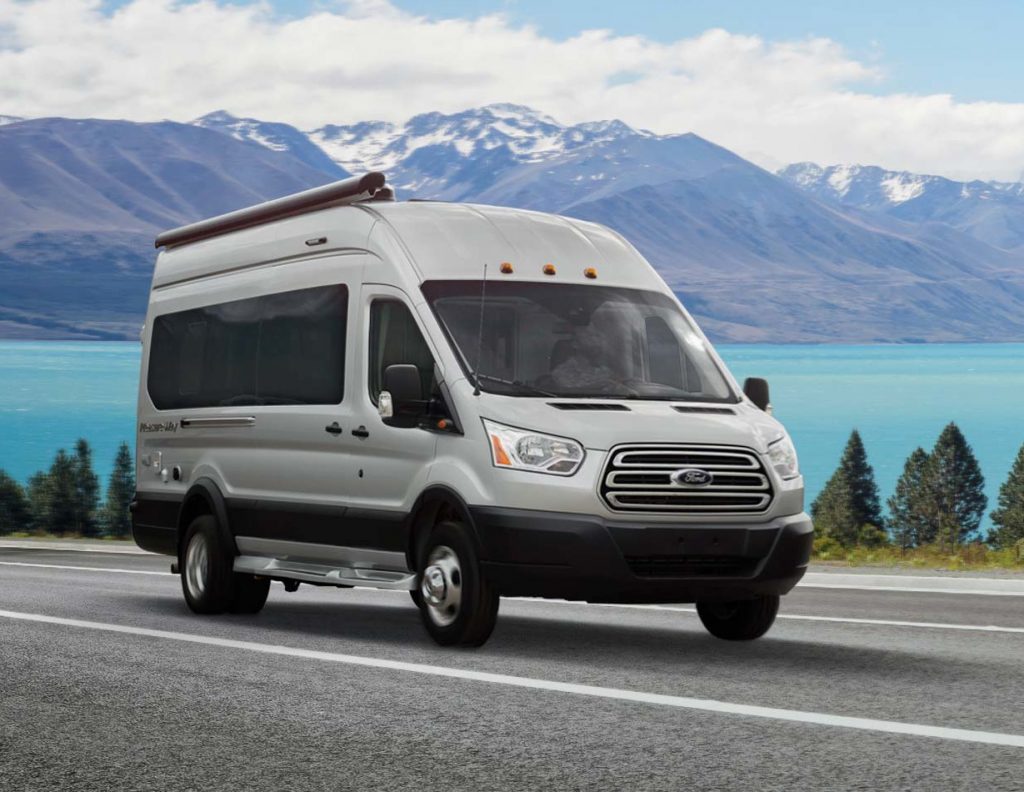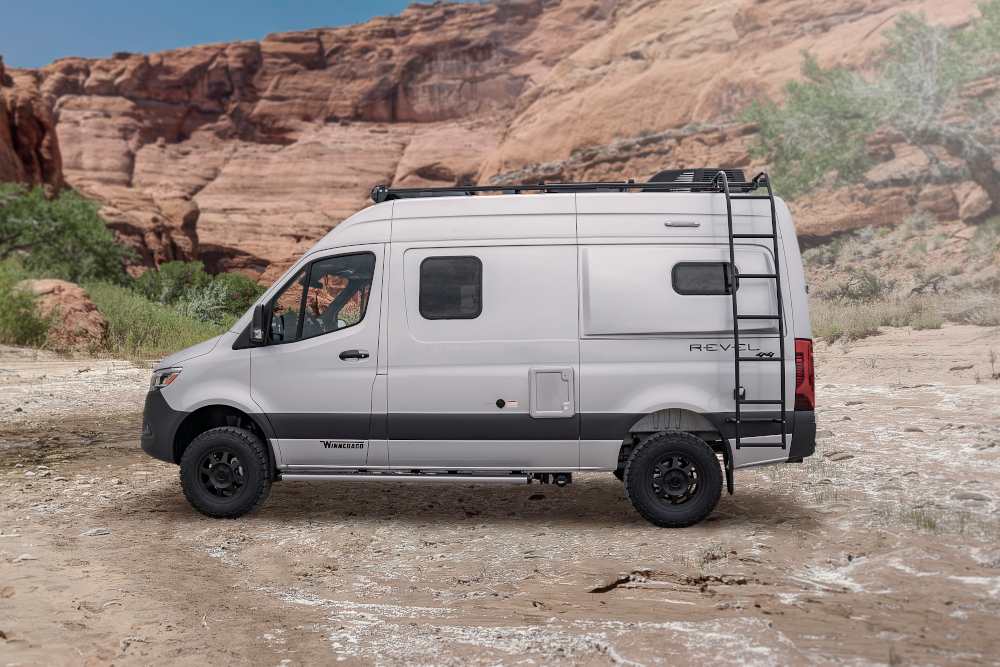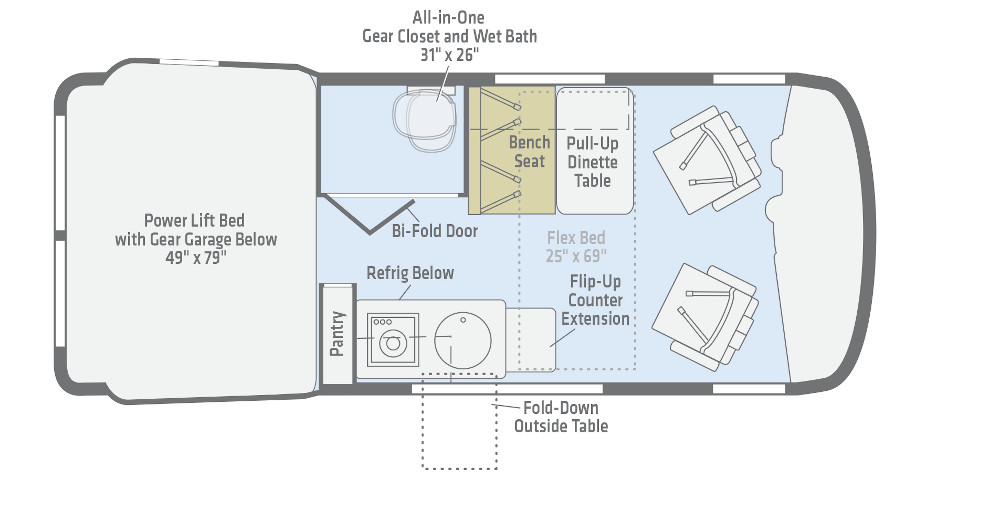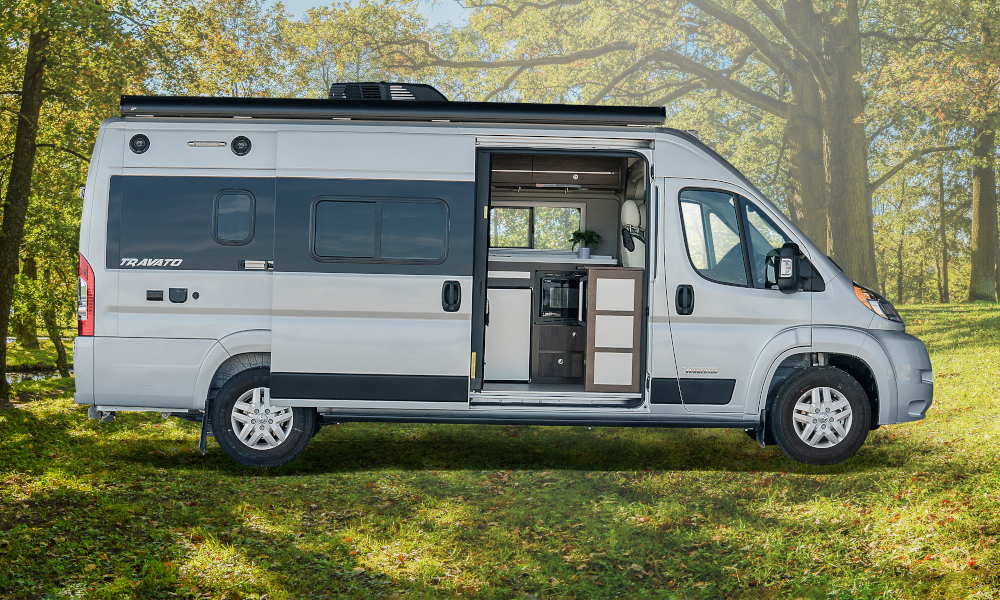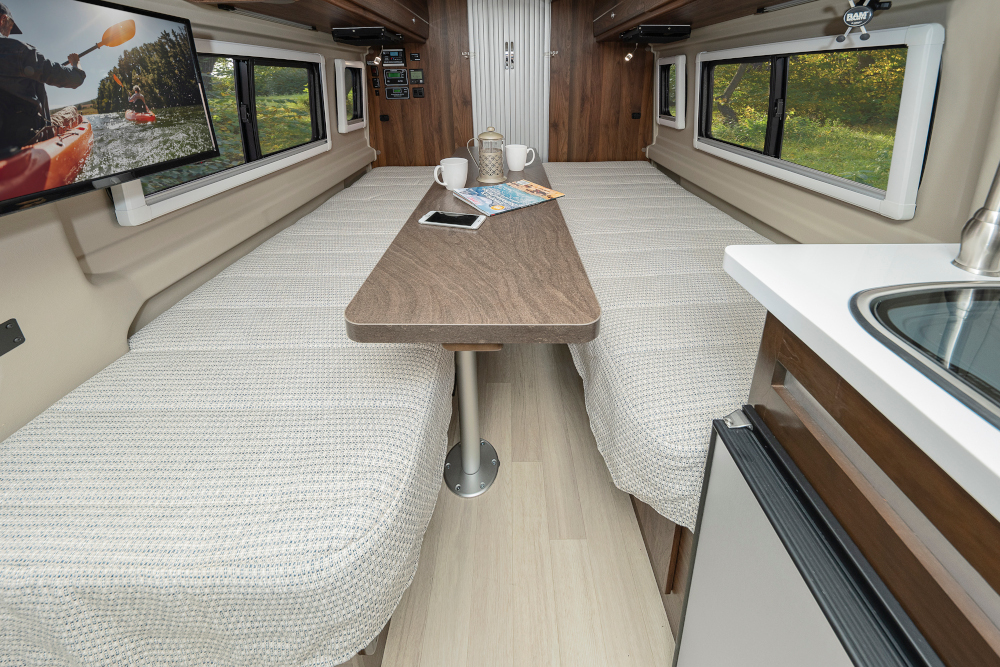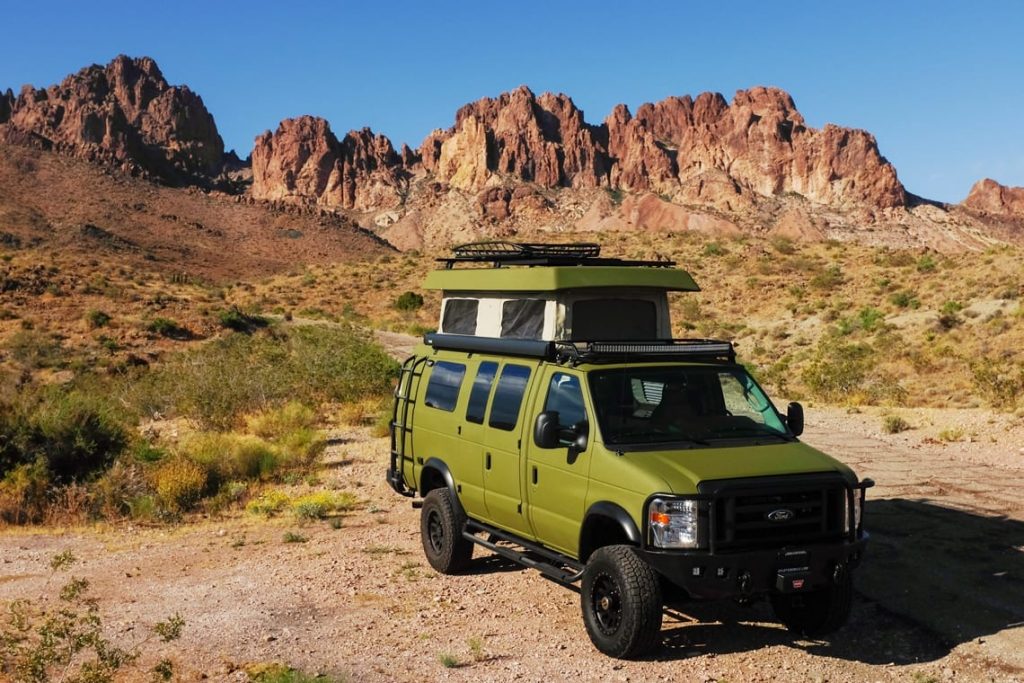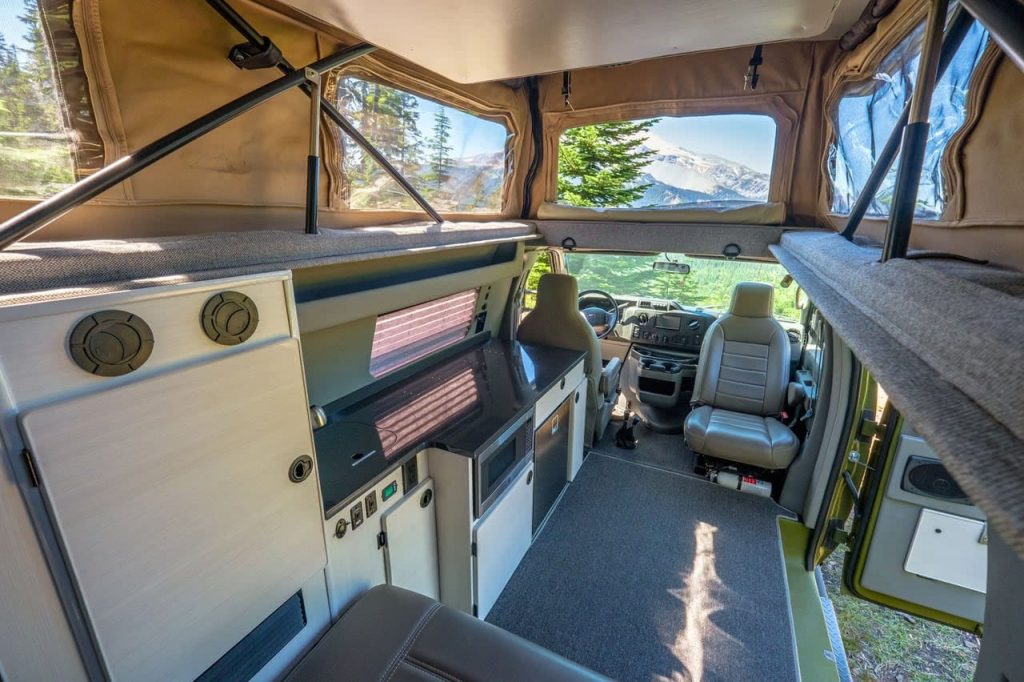Glossary text
3-Way Refrigerator
Refers to a refrigerator that can run off of LP gas, 12V battery power, and shore power. Also called an absorption refrigerator. While being able to run off of LP gas is a plus, it is not as efficient as an electric compressor refrigerator. Moreover, the van must be level in order for a 3-way refrigerator to run correctly and safely.
AGM Battery
Absorbed Glass Mat battery, so named because there are fiberglass mats between the plates of the battery. They are spill proof, tolerant of vibration, and they do not give off any hydrogen gas. They were developed in the 1980s for military aircraft and are perhaps the most common battery for Class B camper vans. The main disadvantage is that they can only be discharged to 50% meaning a 100 amp hour battery only has 50 amp hours of usable power.
Black Tank
The black tank is primarily the sewage reservoir for the toilet. It may also contain the waste water from sinks or showers.
BLM
Bureau of Land Management. It manages over 12% of the land in the United States including over 200 wilderness areas. Many boondocking sites are on BLM land.
Boondocking
The term is used for free camping. Under most uses it is synonymous with dry camping meaning camping outside of an established campground without any electric, water, sewage hookups and without any amenities like toilets, showers, or a camp store. In its prototypical use it means camping isolated from others in a forest or BLM (Bureau of Land Management) land. Some have expanded the use to include any camping without hookups such as at a Walmart, Cracker Barrel, or Harvest Host site.
Cassette Toilet
In most RVs, the toilet is positioned over a large permanent holding tank (called a black tank) of ten gallons or more, which is under the floor of the RV. When the time comes to empty the tank, you drive the RV to a dump station where the contents are emptied using a sewer hose. In a cassette toilet, the toilet includes a small removable holding tank (the cassette). When the time comes to empty the tank, you remove it (typically accessed from a small door on the outside of the van). You then carry the tank to a public toilet or to a dump station where you can empty it. That is the advantage the cassette toilet has over the more traditional toilet: you can empty it anywhere. The disadvantage is that you have to empty it more frequently since it only holds five gallons. Another disadvantage is that it is heavy to lug around, although many cassettes have wheels and telescoping handles. As opposed to a portable toilet, the cassette toilet is permanently installed in the van. The cassette toilet includes a small fresh water holding tank which is used for flushing.
Chassis Battery
The battery that is similar in function to your car battery is called the chassis battery. This battery powers the drive train, the instrument panel, the dash radio. Basically anything involved in driving the van. See also house battery.
City Water Connector/Inlet (aka city fill)
The city water connector on your van allows you to connect your van to an outdoor water faucet using a drinking water safe hose with standard garden hose type connectors. This connection bypasses your fresh water holding tank and the water pump in your van. In your everyday experience, when you turn on an outdoor faucet, water gushes out of it, and we say the water is pressurized. The city water connector transmits water under pressure to your van so when you turn on a faucet in your van water gushes out of it without needing your water pump. It is highly recommended you use a pressure regulator for this connection to prevent damage to your van’s water system. Some van travelers never use this connection, opting to use the tank fill.
The city water connector on your van allows you to connect your van to an outdoor water faucet using a drinking water safe hose with standard garden hose type connectors. When you turn on an outdoor faucet, water gushes out of it, and we say the water is pressurized. The city water connector bypasses the
Driveway Surfing
A concept similar to couchsurfing but instead of staying on someone’s couch, you park your van in someone’s driveway (or somewhere on their property). Typically the driveway’s owner is a relative, friends, or fellow traveler. No money changes hands. This is also known as moochdocking.
Dry Bath
A dry bath is similar to what you have at home. The shower is in its own space in the bathroom. The toilet is not in the shower stall. This contrasts with a wet bath is where the shower encompasses the entire bathroom space. When you shower in a wet bath you will get the toilet and possibly a sink wet. A wet bath is designed for this and is not a big deal. Most Class B camper vans have a wet bath.
Dry Weight
The dry weight is the weight of the van from the class B manufacturer not including any liquids (gas, water, etc). For example, a ProMaster 3500 commercial van weighs 5,070 pounds and the manufacturer may add 2,260 pounds (interior cabinetry, refrigerator, heating, coolling, etc). So in this case the dry weight is 5,070 + 2,260 or 7,330 pounds. (see GVRW)
Dump Station
A place for dumping your black and gray tanks. Dump Stations are most often found in campgrounds. However, some rest areas, truck stops, and municipalities have dump stations as well.
Full Hookups
At a campsite, the ability to hook up your fresh water and sewer lines and your electric power cord.
GAWR
Gross Axle Weight Rating. These will be specified for both the front and rear axle. This is the amount of weight that axle can safely carry. (see GVRW)
GCRW
Gross Combined Weight Rating. This is the combined weight of GVRW (everything including the van itself, passengers, food, water, gear) and the weight of what can be towed.
Gray Tank
The gray tank is the waste water holding tank for one or more sinks and possibly the shower. It does not contain sewage.
GVRW
Gross Vehicle Weight Rating. This is the weight (typically in pounds). This represents the maximum weight of everything. The van itself, the passengers, dogs, food, water. Everything except what you are towing. The dry weight is the weight of the van from the class B manufacturer not including any liquids (gas, water, etc). For example, a ProMaster 3500 commercial van weighs 5,070 pounds and the manufacturer may add 2,260 pounds (interior cabinetry, refrigerator, heating, coolling, etc). So in this case the dry weight is 5,070 + 2,260 or 7,330 pounds. The GVRW minus the dry weight is how much you can carry in your van. So, if the GVRW is 9,350 and the dry weight is 7,330, that means you can carry 2,260 pounds, which includes water, passengers, and any gear you carry. If you are carrying 20 gallons of water in your tank (160 pounds), a full tank of gas (144 pounds) and you and your passenger weigh 150 pounds each that would leave you with 1,656 available for gear.
Holding tank
The reservoir for waste water. (See entries for black tank and gray tank.)
House Battery
The battery that is similar in function to your car battery is called the chassis battery. This battery powers the drive train, the instrument panel, the dash radio. Basically anything involved in driving the van. In contrast the house battery (or coach battery) powers everything that makes the van a camper van: the interior lights in the living area, the ventilation fans, the refrigerator, and other electrical devices. If you have solar panels on the roof of your van, they charge the house battery.
Inverter
An inverter is an electrical device that coverts battery power (usually 12V) to house current (120AC) so you can run normal household devices like laptop chargers and a small coffee maker. It is recommended that you use a pure sign wave inverter because it better mimics the 120AC current that appliances expect.
Moochdocking
See driveway surfing.
Portable Toilet
As the name suggests, a portable toilet is one that can be completely removed from the van. It is not permanently installed. This differs from a cassette toilet which is permanently installed (see glossary entry). Often you can get a mounting plate which will secure the toilet to the van while traveling. The toilet consists of a small tank of fresh water for flushing and a small detachable waste tank of around 5 gallons which can be emptied in a public toilet. Portable toilets are super easy to install since there really isn’t any installation. Plus they are easier to empty than a traditional black tank since they can be emptied in any standard toilet. The disadvantages are that they need to be emptied more frequently than a standard RV toilet (since they only hold 5 gallons) and the portable tank you need to lug to the toilet can weigh over forty pounds (since they hold 5 gallons).
Pure Sine Wave Inverter
An inverter is an electrical device that coverts battery power (usually 12V) to house current (120AC) so you can run normal household devices like laptop chargers and a small coffee maker. A sine wave is a smooth undulating curve. Imagine part of the curve representing by a smooth gradual hill. Now imagine we are trying to approximate this gentle hill by stacking shipping containers. From a distance it may look sort of like that smooth gradual hill but upon closer inspection we see that it is made up of gigantic steps. This is what a modified sine wave inverter does– it approximates a smooth sine wave with large steps. A pure sine wave inverter exactly mimics the sine wave of normal household current. Some sensitive electronic devices such as CPAP machines and monitors require a pure sine wave inverter.
Shore Power
Most class B vans have 2 electrical systems. One is commonly 12 volt and runs off of a bank of batteries. The other is commonly 120 volts AC (the same as house current) and runs off of a glorified extension cord connected to an outlet that supplies power to your van. This is called shore power. (The term originally applied to the electrical system that supplied power to docked boats.) At a campground, shore power is typically provided by an electrical pedestal that has different shaped outlets for 30 amp and 50 amp service as well as a switch (circuit breaker) to turn the power on. A Class B van typically uses 30 amp service. WIthout going into the weeds, an amp is, very roughly, how much energy you are using. For example, a typical RV air conditioner uses around 10 amps and a microwave another 10. When you are running both at the same time you are using 20 amps. Since you are using a 30 amp service, the total of everything you are concurrently using in your van must be under 30. Bigger RVs, such as Class As, have larger energy needs and typically have a 50 amp service.
Tank Fill
The tank fill connector on your van allows you to connect your van to an outdoor water faucet using a drinking water safe hose with standard garden hose type connectors to fill your fresh water tank. Some vans offer a second method to fill the fresh water tank, called a gravity fill, which enables you to fill the tank from water jugs or other sources.
Wet Bath
A wet bath is where the shower encompasses the entire bathroom space. Effectively, the toilet is in the shower stall. When you shower you will get the toilet and possibly a sink wet. A wet bath is designed for this and is not a big deal. This contrasts with a dry bath which is similar to what you have at home. The shower is in its own space in the bathroom. Most Class B camper vans have a wet bath.
